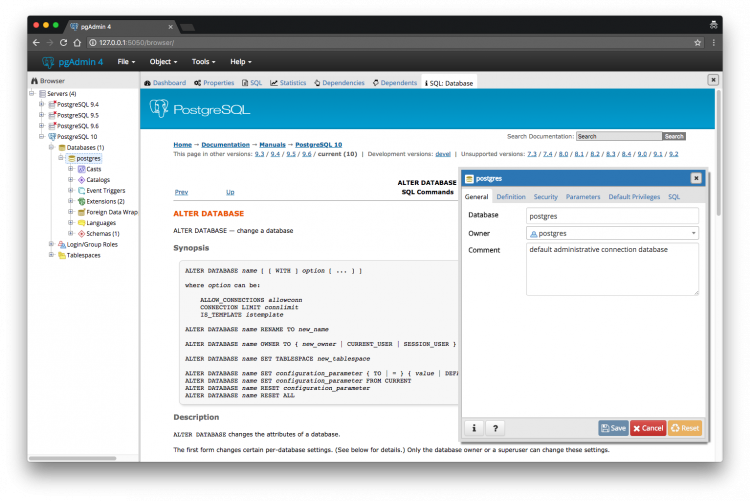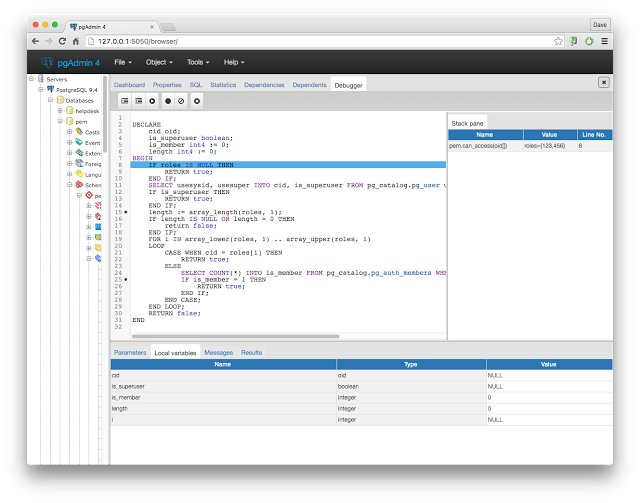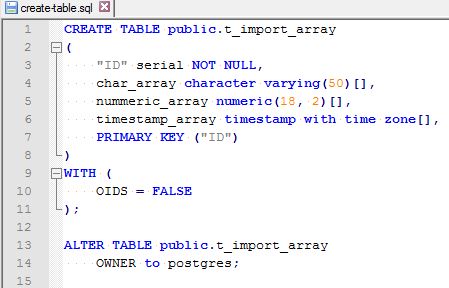
If an icon is highlighted, the option is enabled if the icon is grayed out, the task is disabled. The Query Tool toolbar uses context-sensitive icons that provide shortcuts to frequently performed tasks. You can close the scratch Pad by clicking the close button. This is used to hold text snippets during editing. To erase the content of the Query History tab, select Remove or Remove All from the top of the query history panel. You can show or hide the queries generated internally by pgAdmin by toggling the Show queries generated internally by pgAdmin? option.
#FIND REPLACE PGADMIN 4 UPDATE#
Similarly, you can create new database and database objects like Schemas, Functions, Materialized views, etc, using the query toolĪlter the demo table, update the column name to first_name and add a new column last_name. You can copy-paste the query in the query tool to create a new table. Let's try some examples for the Query Tool: The Query editor features syntax coloring and autocompletion. The Query editor panel is a workspace where you can manually provide a query, copy a query from another source, or read a query from a file. You can open multiple copies of the Query tool in individual tabs simultaneously. You can access the Query Tool via the Query Tool menu option on the browser tree tools menu or through the context menu of selected nodes of the browser tree control. The Query Tool is a powerful, feature-rich environment that allows you to execute arbitrary SQL commands and review the result set. View/Edit data can be used to view or modify a particular table's data.

You can write and execute custom queries on any table in the connected database. See SET and Chapter 20 for more information about allowed parameter names and values.PgAdmin 4 provides 2 different ways to execute queries on the database: SET FROM CURRENT saves the session's current value of the parameter as the database-specific value. Use RESET ALL to clear all database-specific settings. If value is DEFAULT or, equivalently, RESET is used, the database-specific setting is removed, so the system-wide default setting will be inherited in new sessions. Set this database's session default for the specified configuration parameter to the given value. This form of the command cannot be executed inside a transaction block. The new default tablespace of the database. If true, then this database can be cloned by any user with CREATEDB privileges if false, then only superusers or the owner of the database can clone it. How many concurrent connections can be made to this database. If false then no one can connect to this database. The name of the database whose attributes are to be altered. Certain variables cannot be set this way, or can only be set by a superuser. Only the database owner or a superuser can change the session defaults for a database. The database-specific default overrides whatever setting is present in nf or has been received from the postgres command line. Whenever a new session is subsequently started in that database, the specified value becomes the session default value. The remaining forms change the session default for a run-time configuration variable for a PostgreSQL database. Tables and indexes in non-default tablespaces are unaffected. The new default tablespace must be empty for this database, and no one can be connected to the database. This command physically moves any tables or indexes in the database's old default tablespace to the new tablespace.


Only the database owner or a superuser can do this you must also have create privilege for the new tablespace. The fourth form changes the default tablespace of the database. (Note that superusers have all these privileges automatically.) To alter the owner, you must own the database and also be a direct or indirect member of the new owning role, and you must have the CREATEDB privilege. The third form changes the owner of the database. (Connect to a different database if you need to do that.) Only the database owner or a superuser can rename a database non-superuser owners must also have the CREATEDB privilege. The second form changes the name of the database. (See below for details.) Only the database owner or a superuser can change these settings. The first form changes certain per-database settings.

ALTER DATABASE changes the attributes of a database.


 0 kommentar(er)
0 kommentar(er)
